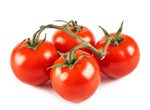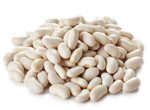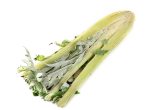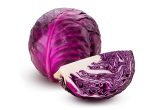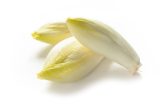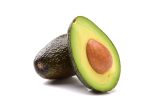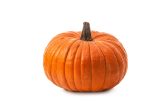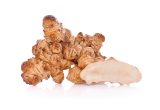Apple (Pink Lady)

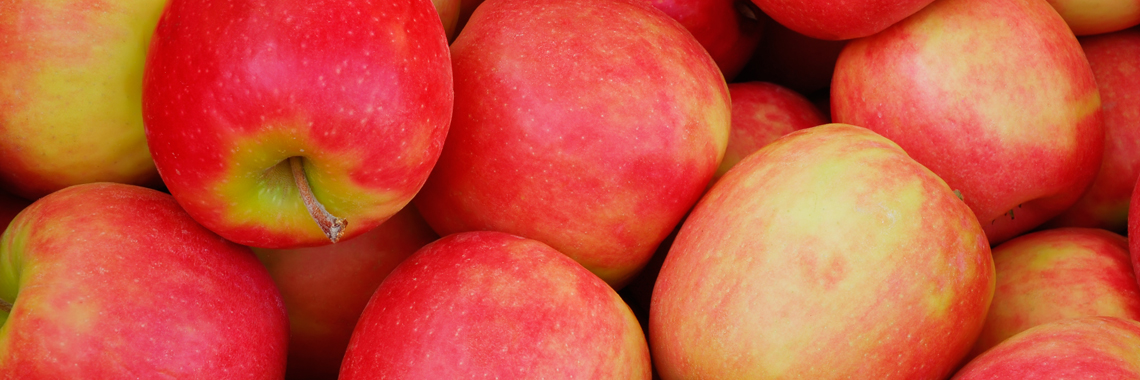
Description
- Apple is the fruit from the apple tree which belongs to the Rosaceae family, genus Malus, species domestica Borkh (Nieuwenhuizen, 2013).
- There are over 7,000 varieties of apples (Kebe, 2014) including the Pink Lady apple.
- The Pink Lady apple was born from a cross between the Golden Delicious and the Lady Williams, in Australia, in 1986. (Noiton, 1996).
PHYSICAL AND ORGANOLEPTIC CHARACTERISTICS
- The colour of the apple is a mark of quality for the consumer. Usually limited to the skin of the apple, anthocyanins are the main pigments that give the red colour to apples (Liu, 2013). Cyanidin 3-galactoside (cy3-gal) accounts for more than 80% of total anthocyanins. This molecule is mainly present in red-skinned cultivars, and partly allows consumers to differentiate between varieties (Guo, 2016).
- Pink Lady apples are pinkish red in colour and contain up to 98 mg/100 g of cy3-gal, as well as a small amount of cy3-arabinoside (2 mg/100 g) and cy3-glucoside (0.6 mg/100 g) (Bureau, 2012).
- Their flesh is firm. They are categorised with sweet fruits with high aromatic intensity, characterised by the descriptors exotic fruits and candy (Mehinagic, 2012).
- Apple aroma is a key factor in the quality of the fruit (Nieuwenhuizen, 2013). Apple produces more than 300 volatile organic compounds responsible for the fruit’s aromas (Nieuwenhuizen, 2013).
- Ripe fruit contains mainly alkyl esters, which account for 80-98% of total volatile compounds and are characteristic of the “fruity” note (Villatoro, 2008), and alcohols, which account for 6-16% of total volatile compounds. Other volatile compounds, less represented, are aldehydes (main compounds of unripe fruit), ketones, sesquiterpenes, terpenes and carboxylic acids (Ting, 2012; Espino-Díaz, 2016).
- Regarding the organic acids responsible for the acidity of apple, Pink Lady apple contains about 6 g/kg of malic acid and 0.05 g/kg maximum of citric acid (Bureau, 2012).
- Apple skin represents the major source of alkyl esters, although the flesh also contains them (Ting, 2012).
- Pink Lady apples are rich in alkyl esters, such as butyl acetate, hexyl acetate, hexyl butanoate, hexyl hexanoate and 2-methylbutyl acetate.
- They also contain 30.33 µg/kg of 1-butanol and 9.35 µg/kg of 2-methyl-1-propanol, alcohols characteristic of sweetness (Dixon, 2000; Villatoro, 2008; Espino-Díaz, 2016).
COMPOSITION CHARACTERISTICS (excluding macronutrients, vitamins and minerals)
- Apple has a significant amount of polyphenols from the flavonoid and phenolic acid family. The total polyphenol content is correlated with the antioxidant capacity of the fruit, but varies from variety to variety (Guo, 2016). Note that polyphenol content decreases with apple maturity, but the effect of ripening remains minimal compared to the effect of variety (Guyot, 2003).
RAW (WITHOUT SKIN)
The following values are approximate and depend on variety, season, ripeness, cultivation conditions, etc. The Pink Lady apple (without skin) provides an average of 60.10 calories (kcal) per 100 g, i.e. 254 kJ.
COMPOSITION TABLES
For each nutrient, the tables provide information on the content, minimum and maximum values, as well as the percentage of the Dietary Reference Values (DRVs) for 100 g net of Pink Lady apple (without skin).
MACRONUTRIENTS
| Constituent (g) | Average content |
Min-Max per 100g |
DRV% |
|---|---|---|---|
| Water | 83,6 | - | - |
| Fibers | 2,90 | - | - |
| Carbohydrates | 12,80 | - | 4,92 |
| Sugars | 12,30 | - | 13,67 |
| Lipids | < 0,50 | - | - |
| Saturated fat | < 0,01 | - | - |
| Protein | < 0,50 | - | - |
| Constituent (g) | Amount | Min-Max | DRV% |
|---|---|---|---|
| Water | Ciqual 2020 (valeur issue des analyses Ciqual-Aprifel 2017) | - | - |
| Fibers | Ciqual 2020 (valeur issue des analyses Ciqual-Aprifel 2017) | - | - |
| Carbohydrates | Ciqual 2020 (valeur issue des analyses Ciqual-Aprifel 2017) | - | Règlement (UE) N°1169/2011 du parlement Européen, et du conseil du 25 octobre 2011 |
| Sugars | Ciqual 2020 (valeur issue des analyses Ciqual-Aprifel 2017) | - | Règlement (UE) N°1169/2011 du parlement Européen, et du conseil du 25 octobre 2011 |
| Lipids | Ciqual 2020 (valeur issue des analyses Ciqual-Aprifel 2017) | - | Règlement (UE) N°1169/2011 du parlement Européen, et du conseil du 25 octobre 2011 |
| Saturated fat | Ciqual 2020 (valeur issue des analyses Ciqual-Aprifel 2017) | - | Règlement (UE) N°1169/2011 du parlement Européen, et du conseil du 25 octobre 2011 |
| Protein | Ciqual 2020 (valeur issue des analyses Ciqual-Aprifel 2017) | - | Règlement (UE) N°1169/2011 du parlement Européen, et du conseil du 25 octobre 2011 |
Zoom on carbohydrates
- Their carbohydrate content is significant (12.80 g per 100 g). This is higher than the average amount found in fresh fruit (11.31 g per 100 g).
- These are mainly fructose (6.60 g per 100 g), sucrose (4.60 g per 100 g) and glucose (1.10 g per 100 g).
Zoom on fibres
- Pink Lady apples (without skin) contain a significant amount of fibre (2.90 g per 100 g), higher than the average amount found in fresh fruit (2.77 g per 100 g).
Zoom on lipids
- Pink Lady apples are fat-free* as they contain less than 0.5 g of fat per 100 g.
* Regulation (EC) No 1924/2006 of the European Parliament and of the Council of 20 December 2006 on nutrition and health claims made on foods.
MINERALS AND TRACE ELEMENTS
| Constituent | Average content |
Min-Max per 100g |
DRV% |
|---|---|---|---|
| Calcium (mg) | 2,80 | - | 0,35 |
| Chloride (mg) | < 20 | - | - |
| Copper (mg) | 0,03 | - | 3 |
| Iron (mg) | 0,07 | - | 0,50 |
| Iodine (µg) | < 20 | - | - |
| Magnesium (mg) | 3 | - | 0,80 |
| Manganese (mg) | 0,02 | - | 1 |
| Phosphorus (mg) | 7,50 | - | 1,07 |
| Potassium (mg) | 110 | - | 5,50 |
| Selenium (µg) | < 20 | - | - |
| Sodium (mg) | < 5 | - | - |
| Zinc (mg) | < 0,05 | - | - |
| Constituent | Amount | Min-Max | DRV% |
|---|---|---|---|
| Calcium (mg) | Ciqual 2020 (valeur issue des analyses Ciqual-Aprifel 2017) | - | Règlement (UE) N°1169/2011 du parlement Européen, et du conseil du 25 octobre 2011 |
| Chloride (mg) | Ciqual 2020 (valeur issue des analyses Ciqual-Aprifel 2017) | - | Règlement (UE) N°1169/2011 du parlement Européen, et du conseil du 25 octobre 2011 |
| Copper (mg) | Ciqual 2020 (valeur issue des analyses Ciqual-Aprifel 2017) | - | Règlement (UE) N°1169/2011 du parlement Européen, et du conseil du 25 octobre 2011 |
| Iron (mg) | Ciqual 2020 (valeur issue des analyses Ciqual-Aprifel 2017) | - | Règlement (UE) N°1169/2011 du parlement Européen, et du conseil du 25 octobre 2011 |
| Iodine (µg) | Ciqual 2020 (valeur issue des analyses Ciqual-Aprifel 2017) | - | Règlement (UE) N°1169/2011 du parlement Européen, et du conseil du 25 octobre 2011 |
| Magnesium (mg) | Ciqual 2020 (valeur issue des analyses Ciqual-Aprifel 2017) | - | Règlement (UE) N°1169/2011 du parlement Européen, et du conseil du 25 octobre 2011 |
| Manganese (mg) | Ciqual 2020 (valeur issue des analyses Ciqual-Aprifel 2017) | - | Règlement (UE) N°1169/2011 du parlement Européen, et du conseil du 25 octobre 2011 |
| Phosphorus (mg) | Ciqual 2020 (valeur issue des analyses Ciqual-Aprifel 2017) | - | Règlement (UE) N°1169/2011 du parlement Européen, et du conseil du 25 octobre 2011 |
| Potassium (mg) | Ciqual 2020 (valeur issue des analyses Ciqual-Aprifel 2017) | - | Règlement (UE) N°1169/2011 du parlement Européen, et du conseil du 25 octobre 2011 |
| Selenium (µg) | Ciqual 2020 (valeur issue des analyses Ciqual-Aprifel 2017) | - | Règlement (UE) N°1169/2011 du parlement Européen, et du conseil du 25 octobre 2011 |
| Sodium (mg) | Ciqual 2020 (valeur issue des analyses Ciqual-Aprifel 2017) | - | - |
| Zinc (mg) | Ciqual 2020 (valeur issue des analyses Ciqual-Aprifel 2017) | - | Règlement (UE) N°1169/2011 du parlement Européen, et du conseil du 25 octobre 2011 |
Zoom on minerals and trace elements
- Pink Lady apples provide the equivalent of 5.50% of DRVs for potassium, i.e. 110 mg per 100 g.
- The amount of other minerals and trace elements in Pink Lady apples (without skin) is less than 4% of DRVs.
VITAMINS
| Constituent | Average content |
Min-Max per 100g |
DRV% |
|---|---|---|---|
| Provitamin A Beta-carotene (µg) | 32,30 | - | - |
| Vitamin A equivalent (µg) | 5,38 | - | 0,67 |
| Vitamin B1 (mg) | < 0,015 | - | - |
| Vitamin B2 (mg) | < 0,01 | - | - |
| Vitamin B3 (mg) | < 0,10 | - | - |
| Vitamin B5 (mg) | 0,093 | - | 1,55 |
| Vitamin B6 (mg) | 0,058 | - | 4,14 |
| Vitamin B9 (µg) | < 5 | - | - |
| Vitamin C (mg) | 2,13 | - | 2,66 |
| Vitamin E (mg) | < 0,08 | - | - |
| Vitamin K1 (µg) | < 0,80 | - | - |
| Constituent | Amount | Min-Max | DRV% |
|---|---|---|---|
| Provitamin A Beta-carotene (µg) | Ciqual 2020 (valeur issue des analyses Ciqual-Aprifel 2017) | - | - |
| Vitamin A equivalent (µg) | Calcul à partir de la valeur Provitamine A Béta-carotène* | - | Règlement (UE) N°1169/2011 du parlement Européen, et du conseil du 25 octobre 2011 |
| Vitamin B1 (mg) | Ciqual 2020 (valeur issue des analyses Ciqual-Aprifel 2017) | - | Règlement (UE) N°1169/2011 du parlement Européen, et du conseil du 25 octobre 2011 |
| Vitamin B2 (mg) | Ciqual 2020 (valeur issue des analyses Ciqual-Aprifel 2017) | - | Règlement (UE) N°1169/2011 du parlement Européen, et du conseil du 25 octobre 2011 |
| Vitamin B3 (mg) | Ciqual 2020 (valeur issue des analyses Ciqual-Aprifel 2017) | - | Règlement (UE) N°1169/2011 du parlement Européen, et du conseil du 25 octobre 2011 |
| Vitamin B5 (mg) | Ciqual 2020 (valeur issue des analyses Ciqual-Aprifel 2017) | - | Règlement (UE) N°1169/2011 du parlement Européen, et du conseil du 25 octobre 2011 |
| Vitamin B6 (mg) | Ciqual 2020 (valeur issue des analyses Ciqual-Aprifel 2017) | - | Règlement (UE) N°1169/2011 du parlement Européen, et du conseil du 25 octobre 2011 |
| Vitamin B9 (µg) | Ciqual 2020 (valeur issue des analyses Ciqual-Aprifel 2017) | - | Règlement (UE) N°1169/2011 du parlement Européen, et du conseil du 25 octobre 2011 |
| Vitamin C (mg) | Ciqual 2020 (valeur issue des analyses Ciqual-Aprifel 2017) | - | Règlement (UE) N°1169/2011 du parlement Européen, et du conseil du 25 octobre 2011 |
| Vitamin E (mg) | Ciqual 2020 (valeur issue des analyses Ciqual-Aprifel 2017) | - | Règlement (UE) N°1169/2011 du parlement Européen, et du conseil du 25 octobre 2011 |
| Vitamin K1 (µg) | Ciqual 2020 (valeur issue des analyses Ciqual-Aprifel 2017) | - | Règlement (UE) N°1169/2011 du parlement Européen, et du conseil du 25 octobre 2011 |
Zoom on vitamins
- The Pink Lady apple (without skin) contains few vitamins. In fact, their quantity represents less than 5% of DRVs.
*Calculation made: Beta Carotene / 6 + retinol
POLYPHENOLS
| Constituent (mg) | Average content |
Min-Max per 100mg |
|---|---|---|
| Flavonoids (mg) | 12,34 | - |
| of which Flavonols (mg) | 0,45 | - |
| of which Flavanols (mg) | 11,20 | - |
| of which Dihydrochalcones (mg) | 0,69 | - |
| Phenolic Acids (mg) | 14,99 | - |
| of which Hydroxycinnamic acids (mg) | 14,99 | - |
| Total polyphenols | 27,34 | - |
| Constituent (mg) | Amount | Min-Max |
|---|---|---|
| Flavonoids | Etude CTIFL-Aprifel 2017-2018 Méthode utilisée : chromatographie | - |
| of which Flavonols | Etude CTIFL-Aprifel 2017-2018 Méthode utilisée : chromatographie | - |
| of which Flavanols | Etude CTIFL-Aprifel 2017-2018 Méthode utilisée : chromatographie | - |
| of which Dihydrochalcones | Etude CTIFL-Aprifel 2017-2018 Méthode utilisée : chromatographie | - |
| Phenolic Acids | Etude CTIFL-Aprifel 2017-2018 Méthode utilisée : chromatographie | - |
| of which Hydroxycinnamic acids | Etude CTIFL-Aprifel 2017-2018 Méthode utilisée : chromatographie | - |
| Total polyphenols | Etude CTIFL-Aprifel 2017-2018 Méthode utilisée : chromatographie | - |
Zoom on polyphenols
- Polyphenols are substances with an antioxidant effect.
- Hydroxycinnamic acids, a subgroup of phenolic acids, are the polyphenols most present in Pink Lady apples, representing 54.82% of the total polyphenols identified.
- Next come flavanols, a subgroup of flavonoids, which represent 40.98% of total polyphenols.
- Dihydrochalcones and flavonols (subgroups of flavonoids) are present in smaller quantities. They represent respectively 2.54% and 1.66% of total polyphenols.
Nutrition and health claims
According to the definitions of nutrition claims as set out in Regulation (EC) No 1924/2006 on nutrition and health claims, and in view of the composition of the Pink Lady apple, the following claims may be used:
Nutrition claims of Pink Lady apples
- Fat-free (100 g of Pink Lady apples contain no more than 0.5 g of fat)
References
- Agence nationale de sécurité sanitaire de l’alimentation, de l’environnement et du travail. Table de composition nutritionnelle des aliments Ciqual 2020. Consultée le 10/09/2020 depuis le site internet Ciqual https://ciqual.anses.fr/
- Bureau S, Ścibisz I, Le Bourvellec C, Renard CMGC. Effect of Sample Preparation on the Measurement of Sugars, Organic Acids, and Polyphenols in Apple Fruit by Mid-infrared Spectroscopy. Journal of Agricultural and Food Chemistry. 2012;60(14):3551‑63.
- Dixon J, Hewett EW. Hewett. Factors affecting apple aroma/flavour volatile concentration: A Review. New Zealand Journal of Crop and Horticultural Science. 2000;28(3):155‑73.
- Espino-Díaz M, Sepúlveda DR, González-Aguilar G, Olivas GI. Biochemistry of Apple Aroma: A Review. Food Technology and Biotechnology. 2016;54(4):375‑97.
- Guo S, Guan L, Cao Y, Li C, Chen J, Li J, Liu G, Li S, Wu B. Diversity of Polyphenols in the Peel of Apple (Malus Sp.) Germplasm from Different Countries of Origin. International Journal of Food Science & Technology. 2016;51(1):222‑30.
- Guyot S, Marnet N, Sanoner P, Drilleau JF. Variability of the Polyphenolic Composition of Cider Apple (Malus Domestica) Fruits and Juices. Journal of Agricultural and Food Chemistry. 2003;51(21):6240‑7.
- Kebe M. Incidence de traitements thermiques sur le parenchyme de Pomme (Malus Domestica) et diffusion des composés phénoliques. Thèse de doctorat en biochimie. Avignon: Université d’Avignon et des pays de Vaucluse. 2014. 256p.
- Liu Y, Che F, Wang L, Meng R, Zhang X, Zhao Z. Fruit Coloration and Anthocyanin Biosynthesis after Bag Removal in Non-Red and Red Apples (Malus × Domestica Borkh.). Molecules (Basel, Switzerland). 2013;18(2):1549‑63.
- Mehinagic E, Charles M, Vigneau E, Symoneaux R, Maitre I. Segmentation des consommateurs de pommes selon des critères gustatifs. Revue suisse Viticulture, Arboriculture, Horticulture. 2012;44(6):360‑6.
- Nieuwenhuizen NJ, Green SA, Chen X, Bailleul EJ, Matich AJ, Wang MY, Atkinson RG. Functional Genomics Reveals That a Compact Terpene Synthase Gene Family Can Account for Terpene Volatile Production in Apple1[W]. Plant Physiology. 2013;161(2):787‑804.
- Noiton DAM, Alspach PA. Founding Clones, Inbreeding, Coancestry, and Status Number of Modern Apple Cultivars. Journal of the American Society for Horticultural Science. 1996;121(5):773‑82.
- Règlement (CE) N° 1924/2006 du Parlement européen et du Conseil du 20 décembre 2006 concernant les allégations nutritionnelles et de santé portant sur les denrées alimentaires.
- Règlement (UE) N°432/2012 de la Commission du 16 mai 2012 établissant une liste des allégations de santé autorisées portant sur les denrées alimentaires, autres que celles faisant référence à la réduction du risque de maladie ainsi qu’au développement et à la santé infantiles.*
- Règlement (UE) n°1169/2011 du Parlement européen et du Conseil du 25 octobre 2011 concernant l’information des consommateurs sur les denrées alimentaires, modifiant les règlements (CE) n°1924/2006 et (CE) n°1925/2006 du Parlement européen et de Conseil et abrogeant la directive 87/250/CEE de la Commission, la directive 90/496/CEE du Conseil, la directive 1999/10/CE de la Commission, la directive 200/13/CE du Parlement européen et du Conseil, les directives 2002/67/CE et 2008/5/CE de la Commission et le règlement (CE) n°608/2004 de la Commission.
- Ting VJL, Soukoulis C, Silcock P, Cappellin L, Romano A, Aprea E, Bremer PJ, Märk TD, Gasperi F, Biasioli F. In Vitro and In Vivo Flavor Release from Intact and Fresh-Cut Apple in Relation with Genetic, Textural, and Physicochemical Parameters. Journal of Food Science. 2012;77(11):C1226‑33.
- VillatoroC, Altisent R, Echeverría G, Graell J, López ML, Lara I. Changes in Biosynthesis of Aroma Volatile Compounds during On-Tree Maturation of ‘Pink Lady®’ Apples. Postharvest Biology and Technology. 2008;47(3):286‑95.





